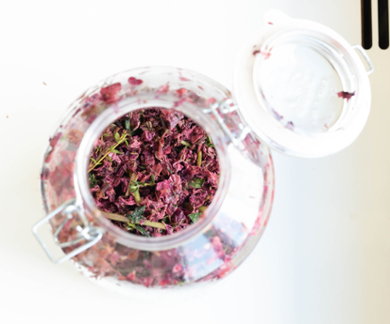
Researchers recreate 17th-century perfume by Constantijn Huygens
A team of researchers from Young Academy and the Huygens ING/NL Lab has brought a three-century-old fragrance to life based on a recipe by Constantijn Huygens. The fragrance makes the past more tangible and can help people experience history differently.
The recipe for the fragrance is one of 150 recipes collected in a recipe book by Constantijn Huygens (1596-1687). The researchers also found references to perfume in previously unexamined correspondence by Huygens. The letters reveal a very personal side to the man who is known as the secretary to Princes of Orange, a poet, a musician and a scholar. The recipe book and correspondence show that Huygens was also an amateur parfumier who swapped recipes with men and women. A group of academics decided to recreate one of his scents.
Memories
They chose Huygens’ recipe ‘Rieckend water van mijn moeder’ [‘Ode de parfum: To my mother’]. ‘We think this scent was to keep the memory of his mother alive after her death,’ says Hanneke Hulst, Professor of Neuropsychology in Health and Disease. ‘Regions of the brain that are involved in processing emotions and our memory sit side by side in our brain. When a smell is linked to a strong emotion, positive or negative, this creates a deep-seated memory. It is very special to be able to smell a scent that was most probably of great emotional value to Huygens.’

Floral and spicy
The eau de cologne that reminded Huygens of his mother is flowery but spicy too, with ingredients such as rose, lavender, thyme, marjoram, clove and cinnamon. It’s a different scent from today’s perfumes. It has a bit more oomph. ‘It’s a nice scent,’ says reader in English literature Nadine Akkerman, who is studying correspondence networks and knowledge exchange for the project. The eau de cologne is meant to be sprayed around the house rather than used as a perfume.
Flirting
According to Akkerman, Huygens used scents in different ways. ‘When he exchanged recipes with men, this was more about the scientific side, about the distillation process, for instance. It’s the beginning of chemical science. With women, he flirted.’ Akkerman paraphrases what Huygens wrote to singer Utricia Ogle: ‘“We composed the most beautiful music together. Now we are apart. If you place this sachet between your sheets and I do the same, then we shall still be together.” This gives us a completely different picture of this man. We learn more about his personal relationships.’
Broaden
The researchers hope that the project will allow people to experience history differently. They also want to draw more attention to the connection between emotion and memory. Hulst: ‘I rarely deal with the past. My daily work involves looking at how we can make things better for patients in the future. This project and smelling the fragrance has suddenly made the past more tangible for me. Huygens becomes much more of a man of flesh and blood. It’s an invitation to broaden my perspective.’

Exhibition
If you want to smell the scent yourself, you can do so at the Huygens’ Hofwijck estate in Voorburg. An exhibition on Constantijn Huygens will be held there from 9 April to 4 July and from 31 August to 5 December. Based on the reconstruction by the research team, Mary Pierre Julien, a parfumier at Givaudan, recreated the scent. You can smell this as eau de cologne at the exhibition and can also purchase it as a scented candle.
Visitors to the exhibition will also be able to see how Huygens would have made the scent. In addition, the research by experts in early modern historical texts and materials will be on display and brain researchers from the Brain in the Picture Foundation will explain how scents are processed in the brain and how they are inextricably linked to emotions and memories.
Text: Dagmar Aarts
Photos: Durare
